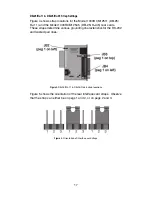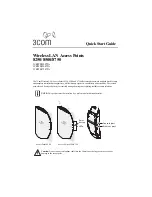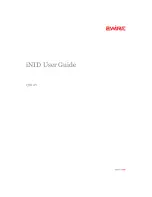
28
Note
RS-232 devices idle in a low state, so the LED will glow red if
the connections are correct and the RS-232 device is in an idle
state.
The “RTS” and “CD” Indicators
The “RTS” and “CD” indicators are bi-color and will glow red for a “low”
signal or green for a “high” signal. RTS lights for an incoming signal on
RS-232 pin 4. CD lights for an incoming signal on the line side, and the
resulting output signal on RS-232 pin 8.
The “Test” Indicator
The green “Test” LED indicates that V.52 or V.54 tests are running.
The “Error” Indicators
The “Error” indicator LED has three functions:
A. When the 1080A is in test mode (green “Test” LED is lit), the error
LED glows red when bit errors occur.
B. When not in test mode (green “Test” LED is off), the error LED is used
to indicate an RTS streaming condition. See section 5.2, “Antistreaming
Error Indicator” on page 29 for information on the antistreaming circuitry.
C. The “Error” LED is also used to detect line quality, such:
1. The improper use of flat (non-twisted pair) cable to connect the
modems.
2. One or more broken wire in the 4 wire twisted pair cable.
3. The use of low quality twisted pair cable to connect the modems.
4. Broken or corroded connector.
Note
In detecting line quality the “Error” LED indicator is designed for
4 wire twisted pair cable only, and may not function properly with
two wire cable.
Setting Up The “Error” LED To Test Cable Quality
If there is any question as to the quality of your line we recommend the
following test:
1. Disconnect both local and remote modems from their RS-232 inter-
face. Make sure “TD”, “RD” and “RTS” LEDs are lit red.













































